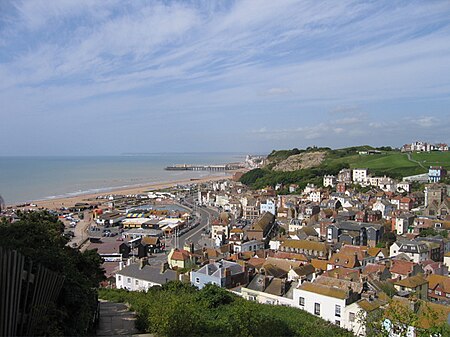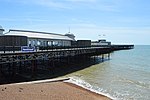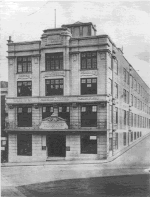Hastings
Beaches of East SussexBoroughs in EnglandCinque portsFormer civil parishes in East SussexHastings ... and 7 more
Market towns in East SussexNon-metropolitan districts of East SussexPopulated coastal places in East SussexSeaside resorts in EnglandTowns in East SussexUnparished areas in East SussexUse British English from August 2014

Hastings ( HAY-stings) is a seaside town and borough in East Sussex on the south coast of England, 24 mi (39 km) east of Lewes and 53 mi (85 km) south east of London. The town gives its name to the Battle of Hastings, which took place 8 mi (13 km) to the north-west at Senlac Hill in 1066. It later became one of the medieval Cinque Ports. In the 19th century, it was a popular seaside resort, as the railway allowed tourists and visitors to reach the town. Today, Hastings is a fishing port with the UK's largest beach-based fishing fleet. It has an estimated population of 91,100 as of 2021.
Excerpt from the Wikipedia article Hastings (License: CC BY-SA 3.0, Authors, Images).Hastings
Bottle Alley,
Geographical coordinates (GPS) Address Nearby Places Show on map
Geographical coordinates (GPS)
| Latitude | Longitude |
|---|---|
| N 50.85 ° | E 0.57 ° |
Address
Bottle Alley
TN37 6DB , Cuckoo Hill
England, United Kingdom
Open on Google Maps








